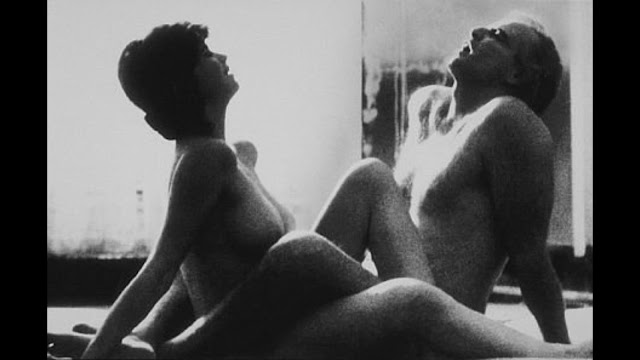With tropes like, "This is the dirtiest campaign ever" being amplified to a fanatical degree by the Media and the Internet, it's possible to think it may be so, until you remember the pundits have been saying the same thing about the last several election cycles and presidential campaigns. So I think it's safe to predict that the next election cycle will sink to even lower depths, waste more time that could be used for getting things done, and throw away more money for the wrong reasons.
It's not so much about the beliefs and positions of the left or right as it is about the growing distance between the two camps that's making compromise close to impossible. So what's wrong with that, what's wrong with opposing camps raining down invective and hurling personal insults at each other?
You've heard the expression, "It's not personal; it's business." It's an expression that makes a lot of sense when applied to the nation's business, the business of running the country, which amounts to government doing the greatest good for the greatest number of people, even if that sometimes means doing nothing. Personal connotes doing something for your own immediate gain; business connotes a rationale that involves something larger than the individual.
Sitting around the table negotiating takes patience, civility, and a degree of mutual understanding — what George H. W. Bush called a kinder, gentler mindset — the capacity to put oneself in the other's position. So what's happened to cause our society to move from positions of relative cooperation to total estrangement? Not that the political forces in this country didn't oppose one another's policies. They did. But when things were on the line, they compromised.
Alienation and ideological fanaticism lead to perpetual gridlock, a condition that's expanded geometrically since the 1970s, one we use as a talking point to blame the other side.
Can anything short of a Napoleon-like dictator get the nation focused on fixing the things that need fixing? That's what Donald Trump is telling us: that only a strong leader can put things right. But we know what happens when a country resorts to a so-called strong leader.
The people who wished for it soon realize they got more than they bargained for. There's a memorable passage on the subject in Elia Kazan's Viva Zapata! (1952), a film that tackles ambition and abuse of power:
I used to believe the rapid increase in kundalini awakenings would somehow put us on the right track. No more. Why? There doesn't seem to be enough time to slow down the headlong worldwide rush to self-destruction.
Not by any of the accepted orthodoxies can we change course:
Religion can't do it: There are more religious wars now than ever before, and on a grander, worldwide scale.
Education can't do it: There are a lot of intelligent people, but the true test of intelligence is not IQ; it's what you use your intelligence for. The more people who graduate; the more they disagree; the more they indulge self-interest.
Politics can't do it: Any institution beholden to money and driven by it is bound to fail.
Science can't do it: It's one step forward and two steps back. For every Salk vaccine we get napalm and the atomic bomb...with runaway profit margins. A cure for every ill, never mind the side effects.
If these orthodoxies were capable of change, they would have already changed things — they've been at it long enough. My guess is, over time, our brains become hard-wired in one of two ever-more-bitter positions: Right becomes Alt-Right and Left becomes Alt-Left. Over generations this breeds a strident, militant, self-righteous inflexibility.
Kundalini can change this wiring, rewiring the brain to a more flexible worldview, a more temperate, more tolerant human being, one whose consciousness extends beyond the puny, insubstantial ego. In order to do so, time is essential; it also running short.
It's not so much about the beliefs and positions of the left or right as it is about the growing distance between the two camps that's making compromise close to impossible. So what's wrong with that, what's wrong with opposing camps raining down invective and hurling personal insults at each other?
 |
| Is Compromise Possible? |
Sitting around the table negotiating takes patience, civility, and a degree of mutual understanding — what George H. W. Bush called a kinder, gentler mindset — the capacity to put oneself in the other's position. So what's happened to cause our society to move from positions of relative cooperation to total estrangement? Not that the political forces in this country didn't oppose one another's policies. They did. But when things were on the line, they compromised.
Alienation and ideological fanaticism lead to perpetual gridlock, a condition that's expanded geometrically since the 1970s, one we use as a talking point to blame the other side.
Can anything short of a Napoleon-like dictator get the nation focused on fixing the things that need fixing? That's what Donald Trump is telling us: that only a strong leader can put things right. But we know what happens when a country resorts to a so-called strong leader.
 |
| Crowning the New Savior |
The people who wished for it soon realize they got more than they bargained for. There's a memorable passage on the subject in Elia Kazan's Viva Zapata! (1952), a film that tackles ambition and abuse of power:
Zapata (to his followers): "You always look for leaders, strong men without faults. There aren't any. There are only men like yourselves. They change. They desert. They die. There are no leaders but yourselves. A strong people is the only lasting strength.""A strong people..." How did we lose our strength? I'm not talking about military hardware, world hegemony, or economic supremacy; I'm talking about integrity. And when you succumb to every temptation out there, you do lose it. I've summarized this issue previously; no need to repeat. Only to add to the above that we're not alone; the rest of the world is right up there with us, chasing the same illusions: money, power, wanton sex, domination, self-aggrandizement — all the elements Freud said destroyed a man. And if they can destroy a man, they can destroy a nation, a world, a planet. Just look at the frequency and prevalence of incarceration, addiction, war, new diseases, racial hatred, sex crimes, wanton violence.
I used to believe the rapid increase in kundalini awakenings would somehow put us on the right track. No more. Why? There doesn't seem to be enough time to slow down the headlong worldwide rush to self-destruction.
Not by any of the accepted orthodoxies can we change course:
Religion can't do it: There are more religious wars now than ever before, and on a grander, worldwide scale.
Education can't do it: There are a lot of intelligent people, but the true test of intelligence is not IQ; it's what you use your intelligence for. The more people who graduate; the more they disagree; the more they indulge self-interest.
Politics can't do it: Any institution beholden to money and driven by it is bound to fail.
Science can't do it: It's one step forward and two steps back. For every Salk vaccine we get napalm and the atomic bomb...with runaway profit margins. A cure for every ill, never mind the side effects.
If these orthodoxies were capable of change, they would have already changed things — they've been at it long enough. My guess is, over time, our brains become hard-wired in one of two ever-more-bitter positions: Right becomes Alt-Right and Left becomes Alt-Left. Over generations this breeds a strident, militant, self-righteous inflexibility.
Kundalini can change this wiring, rewiring the brain to a more flexible worldview, a more temperate, more tolerant human being, one whose consciousness extends beyond the puny, insubstantial ego. In order to do so, time is essential; it also running short.





